Learn about our collaborative approach working with the public to shape our research and ensure its meaningful impact on our local communities.
The ARC East of England Public Involvement Impact Case Studies are used to evaluate the impact of Public, Community, Involvement, Engagement and Participation (PCIEP) on our research and to highlight the changes, benefits and learning gained from partnership working and public involvement in ARC East of England:
- Increasing Bowel Cancer Screening in Muslim Communities
- Involving care homes, residents and relatives in research
- Involving carers and patients to design and try out a Carer Support Nurse Role
- Involving people who are less socially connected in research
- Involving mothers with criminal justice system experience in research
- Involving people with lived experience of using mental health services
- Involving people with impaired capacity nearing the end of life in research
- Involving people with multiple long-term conditions
- Involving young people and school staff to co-design training for self-harm disclosures
- Involving care home residents with care home activity providers
- Involving carers shaping dementia research
- Involving young people shaping mental health research
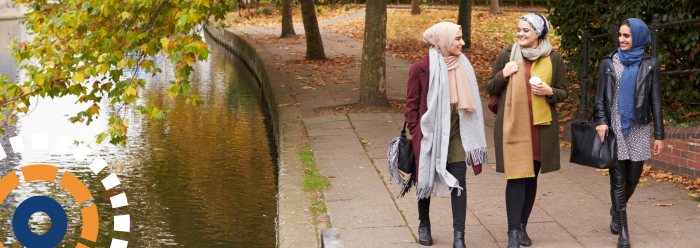
Increasing Bowel Cancer Screening in Muslim Communities
Bowel cancer screening uptake is around 28% lower in people of South Asian ethnicity compared to the general population. Lower rates of screening uptake have also been reported overall among the UK Muslim population. Unequal access to screening can lead to avoidable health inequalities and health outcomes. The British Islamic Medical Association (BIMA) designed a “faith placed” educational intervention which was delivered in selected mosques with the support of local community partners and ARC EoE evaluated the intervention in Luton and Peterborough.
A stakeholder event launched the study which helped to identify potential challenges and ways to overcome them. Peer researchers supporting data collection were recruited from the community to aid data collection and uptake of the screening intervention. As the intervention was delivered in mosques in Luton and Peterborough, its success depended on the engagement of mosque leaders and volunteers from within the Muslim community (including local GPs) who spread the word about the intervention, encouraged people to attend, and hosted the delivery.
Public involvement directed the best way to contact community gatekeepers and how to frame the intervention and its benefits when discussing involvement with mosques. Involvement helped to tailor data collection activities (separate sessions for men and women). Even with public involvement and community support, a great deal of time was needed to successfully collect data. Without public involvement we may have had to abandon data collection in some areas.
We also heard about how being part of the project impacted the lives of those involved. A participant told us that a few weeks after he attended the session, his wife started to show symptoms. He explained that, thanks to the intervention, he was aware of the potential health issue and so encouraged his wife to go to the doctor. Further testing was needed, and she was diagnosed and treated for another type of cancer. She is now in recovery.
The benefit of public involvement provided insight and guidance on how best to communicate with communities, and this was invaluable.
Cultural factors also played a role as seeking medical advice was often associated with being unwell and preventive measures were not widely understood.
Dr Chaudhry, a Peterborough-based GP, involved in the study.
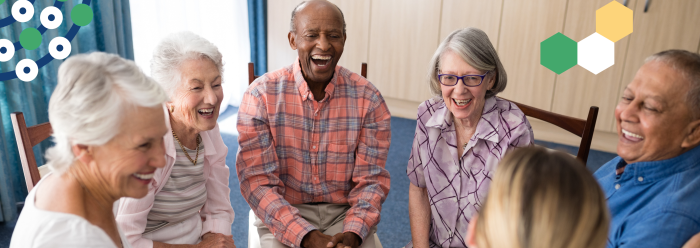
Involving care homes, residents and relatives in research
The aim was to keep the aspirations and concerns of residents, relatives and care home providers (managers and staff) about data recording and information sharing at the centre of Developing resources And minimum data set for Care Homes' Adoption (DACHA) study and to ensure that the study was well-informed about the day-to-day realities of care home work and systems to ensure findings are relevant, practical and useful.
All care homes collect data about their residents as part of routine care. This might include data about resident care needs, like the types of medications they need to take, as well as other important information, such as their likes and dislikes, their quality of life, the number of falls they have had or whether they have had to attend hospital. However, there is no consistent approach to what data care homes should collect, how data are collected, stored, and used. One way to address these issues is to establish an agreed Minimum Data Set (MDS) – information that all care homes collect and share, in a secure way, across organisations, which was the aim of DACHA Study.
Care home residents, relatives, and care providers, as well as national stakeholders were involved in various ways throughout this project. Due to the Covid-19 pandemic, access to care homes was heavily restricted and the team collaborated with the National Activity Providers’ Association (NAPA) to work with Activity Providers in care homes, who facilitated activities and discussions about research in a way that is meaningful to residents.
Regular meetings with relatives and care providers took place on Zoom and fed into many aspects of the study, including to help select care-related outcome measures and informing plans for recruiting residents into the study.
National online consultations with representatives of residents and relatives and care home providers; commissioners, regulators and inspectors of health and social care; together with researchers and family carers were held throughout the project. Topics included data collection, accessing and sharing data in different settings.
An unexpected outcome was that involving residents created a space where residents could express their thoughts around their own care to the Activity Providers facilitating the sessions. Discussions initially sparked by topics exploring aspects of DACHA Study led getting to know residents better and that residents felt the process was empowering. Activity Providers were keen to respond to resident feedback and action meaningful changes in practice – for example, some residents expressed a wish to be involved in reviewing their care plans with staff, which was later implemented at that particular care home.
Through public involvement, areas came up that the research team had not considered but that were very important to residents and relatives. The Public Involvement Panel were crucial in selecting care-related quality of life outcome measures to be tested in the study.
It’s been a real privilege to be part of this group, learning together as we have worked through the different asks of the study, reflecting on the different perspectives from the panel and feeling that all views have been respectfully heard and responded to.
Liz Jones - Public Contributor and Co-Investigator

Involving carers and patients to design and try out a Carer Support Nurse Role
Families and friends play a crucial role supporting people they care for as their unpaid carers. However, they are not always well prepared for this, and it can damage their own health and wellbeing. This can impact their ability to keep ‘caring’. Carers often lack time to look after themselves, putting their own needs last. These needs tend to be hidden until crises. Carers need support to (1) look after their own health and wellbeing and (2) boost their skills and confidence to care. Healthcare policy says this should happen, but healthcare professionals can find this difficult alongside supporting the patient.
To address this, we worked with carers, health and social care professionals, voluntary organisations and national leaders in carer support, to develop a new Carer Support Nurse role. This role was designed to help carers who have their own needs, or who need extra support for their caring role, that cannot be met by their usual healthcare team. The role was also designed to work with other healthcare providers to raise their awareness of carer needs and how to support them.
An extensive number of consultations about the proposed role and the plan for its evaluation took place, with over 70+ East of England stakeholders and groups across health, social care, and the voluntary sector, plus over 100 carers/patients (PPI: Patient & Public Involvement) both before and during the study.
The aim was to ensure that the views of carers and patients were central to the development of the role to help support carers in the community. Their involvement helped to ensure relevance and importance, whether they felt the proposed role could help carers and to co-develop the role with carers, care professionals and commissioners.
Before the study started, we sought a lot of carer and patient views on the problem and the proposed role. Carer involvement continued to be central throughout the study through our Patient and Public Involvement Group. They provided advice and guidance on:
- rationale for the Carer Support Nurse role and the pilot project
- likely carer acceptability of the proposed data collection methods from carers
- developing carer-facing recruitment materials
- developing carer-facing data collection materials i.e., a carer survey
- identifying end of pilot questions for the Carer Support Nurse post-holder that would be important to carers
- troubleshooting operational aspects of the Carer Support Nurse role
- troubleshooting operational aspects of the evaluation
- interpretation and sense-checking qualitative data from carers
We were overwhelmed by the positive reaction to the proposed Carer Support Nurse role and study. During the project, Public Contributors (carers and patients), suggested questions to ask the Carer Support Nurse post-holder that produced informative data that the research team otherwise would not have considered, such as ‘which skills did the nurse feel have been priceless?’. The answers to these questions were collated with other data collected and informed the final recommendations from the pilot.
"Being involved with the project helped me focus on my own health. Every year gets harder and impacts on your physical and mental health. The biggest worry for a Carer is becoming unwell themselves and in my case has caused me to suffer from anxiety [...] Would love to have access to a Carer Support Nurse in my area."
Les Redfern - Carer and Public Contributor

Involving people who are less socially connected in research
Social connection is the feeling we get from our relationships with other people. It can take many forms and is made up of lots of different things and feelings. Many argue that the less involved we are with friends, family or our community, the less healthy we are mentally and physically. Though some people prefer to be alone, feeling unhappy in big groups.
Organised groups, such as support groups for substance abuse, walking groups or chess groups, can be used to help people create friendships, help people feel support, share information and increase their confidence, helping people make healthier choices.
Social connection created within these groups is easy to talk about, yet it can be challenging to measure. This makes it difficult for decision-makers to compare and prioritise which groups should be funded over another. This study explored what feeling socially connected means to people over the age of 50 in the East of England through group discussion.
In response to Covid-19 and the expectation that the effects of the pandemic were disproportionately impacting people who are less socially connected, we employed creative and flexible methods to work with community groups aiming to work with people experiencing loneliness or poor social connection. We also engaged the public through ARC EoE and in-person events and local libraries.
Public involvement highlighted the emotive nature of the research topic of loneliness, which reframed how the researchers approached conversations. The involvement of community organisations was integral in working with people who are less socially connected and mapping the funding and decision-making processes locally.
I feel we need to raise awareness for people like myself, who are not just ageing without children, but who are alone in communities and in society. We need to reach out to them.
Project Public Contributor
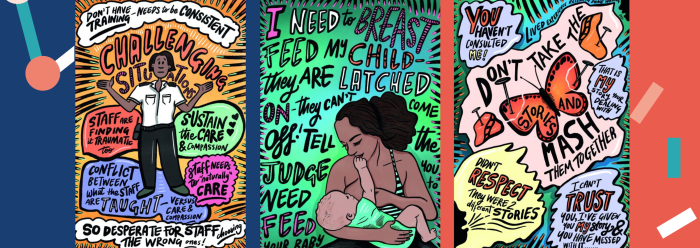
Involving mothers with criminal justice system experience in research
This study explores the experiences of women who undergo mandatory separation of their new-born babies in prison. It is the first project to link the professions of social work, health visiting, midwifery and criminal justice staff with the experiences of women who have been in prison, in understanding their care needs and experiences.
Lived experience involvement has been integral from the outset of this project. We worked with the charity Birth Companions and their lived experience team. This team comprised mothers with direct criminal justice system experience, and they assume a central role as co-creators and decision-makers, providing invaluable insights into systemic issues.
Every part of the study, ranging from the interview schedules and collaborative writing to the design of the project logo, incorporates significant input from the lived experience team. We held regular meetings and workshops with the lived experience team, with an agenda that was collaboratively developed at least three weeks in advance, with topics including ‘non engagement’ with health professionals. We used icebreakers, such as ‘if you were to choose a superpower, what would it be’ to start the sessions and foster a relaxed atmosphere. We also attended a writing retreat as a group too. At the writing retreat the aim was to come together discuss our project aims, to do a podcast together, write (poems and for publications) and create (artwork and podcasts). We also analysed some data together looking for themes in some of the transcripts and did some coding.
The co-production approach in The Lost Mothers Project is seen as a way to create more understanding, and equality when undertaking research. The published article stresses that co-production is not just a trendy idea but a crucial part of making positive changes in how we understand and address issues in the criminal justice system. The lived experience team's active role, both in shaping the research and making decisions, shows the real impact of always including the viewpoints of people who have personally been through the prison system.
I am grateful to be a part of it and use my lived experience to make an impact with this project to try and make change for all the other mothers that have been through the criminal justice system and the mothers that are currently in it.
Lived Experience Team Member

Involving people with lived experience of using mental health services
Health care should be driven by patients’ needs. This is known as “person-centred care”. The NHS recommends it, but there is little guidance on how to provide it. Our researchers developed a way to do this called Support Needs Approach for Patients (SNAP). SNAP uses a tool (a booklet called the “How are you?” Booklet, containing a set of questions to help patients think about areas where they need more support) and a focused conversation between the patient and healthcare professional to help address those needs.
SNAP was first developed for patients with chronic lung disease and is now being used to enable person-centred conversations for patients with a range of chronic physical conditions – these are conversations that focus on patients’ self-identified needs and priorities. The usefulness of SNAP for patients with mental health conditions had not been explored.
Conversations with clinicians suggested it may be relevant for this group as it is a holistic intervention – meaning that it considers the whole person, taking into account emotional and social factors, rather than just the symptoms of a disease. It does this, in particular, through the range of questions covered in the “How are you?” Booklet (the SNAP Tool).
Healthcare professionals from acute mental health settings (i.e., inpatient hospital ward-based care) saw the potential for using SNAP with their service users (“to ensure we are being holistic in our assessments”) but noted that some of the SNAP Tool’s questions might require adaptation for this group. We also needed to find the best way to deliver SNAP’s person-centred process within mental health care.
Guided by Patient and Public Involvement, we worked with mental health service users and mental health healthcare professionals, in a series of focus groups and workshops to adapt the SNAP Tool and SNAP’s person-centred process for mental health, and to validate the adapted tool (i.e., confirm the relevance and comprehensiveness of its adapted questions) through a survey.
“Being involved in this project helped me feel that my admission was not only something very traumatic, but perhaps my experiences could be used to benefit others for some kind of “greater good”. That shift was very powerful. I was glad to be involved t really was transformative for me in how I thought about it"
Lived Experience Contributor

Involving people with impaired capacity nearing the end of life in research
Impaired capacity to consent is a key barrier to research participation, yet including these individuals is vital to ensure care and treatment are based on representative evidence. This project explored ways to overcome these barriers by engaging a multidisciplinary team and affected individuals to develop inclusive research recommendations.
Some researchers hesitate to include people with limited ability to make decisions near the end of life because they worry about protecting them, but this can lead to their voices being left out. To help change this, the project worked with the Anne Robson Trust to hear from people affected by dying and bereavement, especially those who are socially isolated, and explored ways to involve them more meaningfully in research, including through questionnaires, group discussions, and insights from care home staff and volunteers.
By working with the Anne Robson Trust and gathering feedback from workshops and surveys, the project identified key public values—like respect, trust, equality, and representation—that help build the trust needed for research on sensitive end-of-life topics. These insights shaped a strategy to improve inclusion, leading to the creation of accessible materials like a visual summary and co-produced research posters for care home, helping spark conversations about research among people with impaired capacity.
This project provided a unique opportunity to explore and attempt to overcome some of the challenges in providing inclusive research opportunities towards the end-of-life care.
This is an aspect of research which I hadn't - but should have - considered before. Conversations have been fascinating, and it's been a privilege to be included as a lay person. It's made me look differently at the ecologies of care in care homes and examine how voices and wishes are heard and respected
Public Contributor
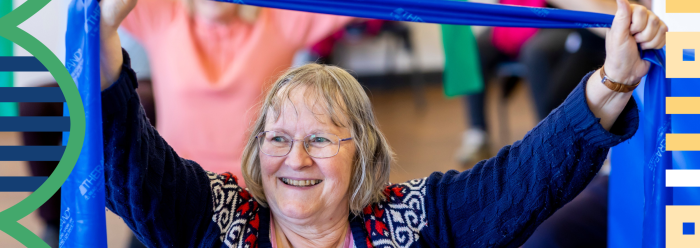
Involving people with multiple long-term conditions
Many people live with two or more conditions, such as diabetes and high blood pressure, that are treated under different care pathways. Often, there is little or no care coordination for people with several health conditions. Therefore, there is an urgent need to reform healthcare systems to improve the overall quality of care for patients with multiple long-term conditions, which may involve shifting some care responsibilities from secondary to primary care services, such as GP practices.
There has been public involvement throughout the study process, from the generation of the research idea to the design and implementation of study material. A core public involvement group were consulted throughout, alongside involving people with lived experience of living with multiple long-term conditions in workshops was to provide critical insights into the current challenges in multiple long-term condition management, how these may be addressed and how future research should be designed.
The involvement of public members in the workshops provided valuable insights into the everyday challenges faced by people with multiple long-term conditions, their carers, and healthcare professionals. It revealed the need for a more integrated and holistic approach to care, improved communication across healthcare systems, and better coordination between services. It also highlighted the importance of mental health support for both patients and caregivers. While the study identified several systemic challenges, such as poor communication and logistical barriers, it also offered practical solutions to streamline processes and improve the overall care experience.
It made me feel valued to be part of a group that looked into the difficulties faced by people living with multiple long-term conditions and how to make processes easier for us. It was great to hear the perspectives of others in the group who are in healthcare or looking after those with multiple conditions.
Public contributor

Involving young people and school staff to co-design training for self-harm disclosures
Self-harm among young people is a significant public health concern. Research indicates that young people who self-harm are at greater risk of experiencing mental health difficulties later in life and have an increased risk of suicide. Concerningly, rates of self-harm have been steadily rising, particularly among those in their mid to late teens, with up to 34% of 15-year-olds reporting self-harm at some point.
Schools play a crucial role in early intervention. School staff are often the first professionals to notice signs of self-harm and are well-placed to offer support. However, many staff report feeling unprepared, lacking the knowledge and confidence needed to address the issue effectively.
The SuppOrtive Response To Self-harm (SORTS) study was developed to fill this gap. The study worked with young people and school staff to co-design a flexible, low-cost training resource that equips school staff with the knowledge, skills, and confidence to respond appropriately to students who self-harm. The result is a 30-minute self-harm awareness e-learning module that provides evidence-based information and interactive scenarios, helping staff to reflect on their responses to self-harm disclosures. The accompanying website and resource toolkit includes infographics, activity sheets, and information leaflets for school staff, parents, and young people. All of these are free for school staff to access.
Coproduction and public involvement were central to this project. At the pre-application stage, young people and secondary school teachers helped shape the research proposal. At the project's outset, we established a Young People’s Advisory Group (YPAG), comprising young people with lived experience of self-harm and those who have supported someone who has self-harmed, such as a friend or sibling. Members actively contributed to developing study materials, advised on study procedures, and provided feedback on two film scripts.
In parallel, we formed an expert PPI panel, including school mental health staff (e.g., mental health leads, safeguarding officers, school counsellors, and therapists) and representatives from the Charlie Waller Trust, a leading mental health charity. This panel collaborated throughout the project to codevelop resources, training content for the e-learning module, and film scripts. Regular meetings allowed us to refine content and design before presenting it to school staff.
I enjoyed being part of the SORTS project - it was interesting to see how research actually works and how it can make a real difference for students who are struggling
Young Persons Advisory Group Member
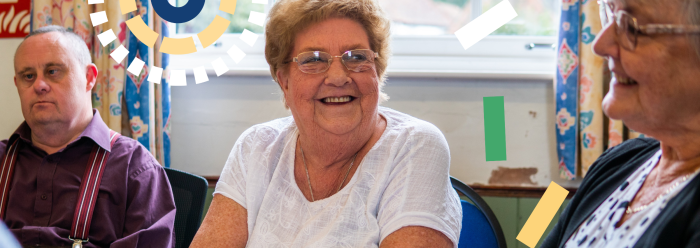
Involving care home residents with care home activity providers
Care homes for older people look after an estimated 400,000 people in England. While public involvement is a requirement in all publicly funded research, researchers do not seem to be including care home residents in research, although many residents would be keen to take part in public involvement roles. Researchers may not be allowed to make direct contact with residents, or assume that asking for involvement is too much burden, or that residents are unable to contribute. This means the people most closely affected by care home research are not influencing research questions or design.
The Care Home Activity Providers facilitating Public Involvement in research as meaningful activity for care home residents (CHAPPI) project built on NIHR East of England Collaboration for Leadership in Applied Health Research and Care (CLAHRC) funded project, Residents Research Active in Care Homes (RReACH) project. The project explored the role of activity providers facilitating public involvement in care home research projects.
Public involvement was embedded throughout the project through the CHAPPI advisory group, a resident advisory group and a public contributor who was a family member with experience of running care activities.
Public involvement as an activity in care settings had the potential to enhance a culture of listening to individuals. It provided an additional opportunity for care homes to demonstrate that they were responsive to individual needs and contributing to knowledge development.
Research outputs include a ‘How To’ Guide for care home activity staff, called ‘Listening to residents voices: Help shape research.’ The Guide introduces care home staff to care home research, public involvement in research of older people living in care homes, and how this can be a meaningful activity for residents To help demystify public involvement in research the Guide relates it to other ways that residents’ voices are heard, that activity staff may be more familiar with, like residents’ meetings and suggestions boxes.
It was a really lovely afternoon and the residents enjoyed themselves. It’s so good for them to join in group conversation, it promotes inclusion, confidence and wellbeing. Thank you so much for including us.
Nichola Lazenby, Well-being Lead, Fairfield Manor Care and Nursing Home.
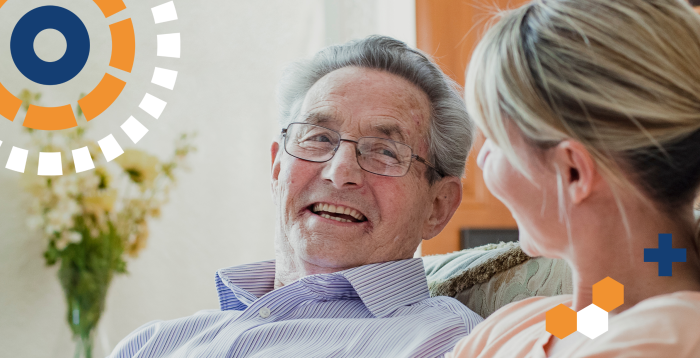
Involving Carers in Shaping Dementia Research
Frontotemporal dementia (FTD) is a major cause of young-onset dementia in people under 65, often marked by changes in behaviour, language, and executive function. These symptoms create significant challenges for carers, leading to stress and poor mental health. Currently, there are no comprehensive non-drug interventions to support carers.
The FTDToolkit project aims to address this gap by evaluating an online platform for monitoring symptoms and carers’ wellbeing, and by developing an online psychoeducational intervention to help carers manage FTD symptoms. This has the potential to improve daily care and enhance carer wellbeing.
Public involvement shaped the study through two online consultations with a carer, who reviewed questionnaires and interview guides. Their feedback led to clearer language, added options for different FTD subtypes, and refined questions to reflect real-life experiences. While involvement was limited to one carer so far, future work will include more carers and, where appropriate, people living with FTD. Even small changes, such as rephrasing questions or explaining terminology, can make research more accessible and relevant.
The carer described the experience as meaningful and valued the chance to share their lived experience of frontotemporal dementia to help shape the research. They appreciated being asked whether the questions and terminology ‘made sense’ and felt the process ensured the study was relevant to real families.

Involving Young People in Shaping Mental Health Research
Around 20% of the UK population is under 18, yet research and services for children are often developed without their input. This project set out to change that by involving young people in shaping mental health research priorities and exploring how findings can be shared in ways that are clear and accessible.
This study carried out four discussion groups with 26 young people aged 13 to 22 to identify what matters most to them and how research results should be communicated. The discussions resulted in seven priority areas being highlighted, including family life, social media, peer pressure, cultural influences, and the importance of explaining the difference between general wellbeing and mental health conditions.
Young people also stressed that research findings should be presented in multiple formats to meet different needs, such as written summaries, infographics, videos and podcasts. These insights will shape future mental health research and guide the development of a toolkit for communicating findings in ways that are engaging and accessible.
I took part in this project because mental health is something I think more people need to talk about, especially for young men. It was good to share our experiences and know that we’re not alone in how we feel.